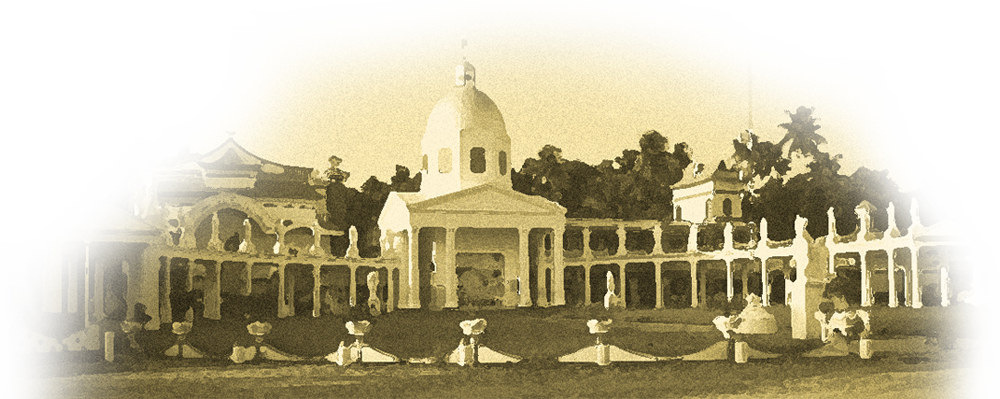

ABOUT CMI
The glory that was Cranganore
The ancient name of Cranganore is Muziris or Muchiripattanam in the mouth of Periyar in Tamil iteration. Muziris was a famous port in the Silk Root between Arabia and China. The foreign explores, merchants, missionaries and adventures entered the subcontinent of India through this maritime routs. Similarly India opened contacts with other part of the world from this west coast in general and from the Malabar Coast in particular. Muziris or Cranganore on Malabar Coast right from the period before Christian era was a great centre of Roman Trade. It is said the emperor Augustus received the embassies from India. Strabo says that in first century about 220 ships sailed through this port.
Due to geological instability of the region the importance of Muziris lost its importance and its glory faded and its place was taken by Cochin and Quilon.
About Kodungallur
It was through this port that the Hindus received from the Phoenicians their art of writing; it must have been from this port that the shipmen of Solomon of Israel, 'that knew the sea,' obtained their valuable cargoes of gold, ivory, sandalwood, etc.
It was to this port that the Greek merchant and mariner Hippalos, that Columbus of ancient times, in his voyage for the discovery of a sea-route to India, was carried by the western monsoons.
It was here, according to common tradition, that the Apostle St. Thomas landed first, planted the Cross and preached Christianity in the opening years of the first century of the Christian era (52 A.D)
It was here, not long after, that the Jews arrived after the destruction of the second temple and the final desolation of Jerusalem (A. D. 69) and founded a colony.
It was here that Thomas Cana landed from Syria, when he brought with him a fresh colony of Syrian Christians.
It was here that the early Chera Kings had their seat, and the Chera king Chenkudduvan held his prosperous court, and ruled over the Chera Empire in the first century of the Christian era.
It was here that the great Cheraman Perumal, Bhaskara Ravi Varma, lived and ruled over Kerala prosperously for thrice the period of his allotted term. It was here that he was visited by certain Muhammadan pilgrims, who, according to tradition, succeeded in inducing the Perumal to turn Muhammadan and undertake the Haj; it was here that the Perumal, on the eve of his renunciation of religion and empire and embarkation for Mecca, is reputed to have distributed Malabar among the many princes, it was here that his emissaries from Mecca founded a Muhammadan colony and built the frist mosque in Malabar.
Tha Portuguese, the first European nation to arrive and to found an empire in India, had seriously thought of making Cranganore their seat of Government, but preferred Cochin, as that place offered, since the formation of the harbor there in the year 1341, a better site.
Kodungallur Today
Kodungallur was in the administrative Taluk of Kodungallur in the Trichur District of the erstwhile Cochin State. The Trichur District of Kerala which is identical with the central region of Kerala is rich in history and cultural tradition. Of all the administrative divisions of Kerala State this district holds out the greatest fascination to the student of ancient history, archaeology and culture.
After the birth of the new Kerala State of the Indian Union on November 1, 1956 a number of changes have been effected in the administrative division of the District and Revenue Division of Trichur making comparison of demographic growth/ decline figures somewhat complicated. At present Kodungallur Thaluk consists of 9 villages with Kodungallur as headquarters.
This coastal town situated 40 Kms to South-West of Trichur lies in 100 100 North latitude and 760 100 East longitude. According to the cencus of 1931(Cochin State) Christians were 6% of the population in the Taluk compared with 29% in the Trichur Taluk, 32% in the Mukundapuram Taluk, and 40% in the Cochin- Kanayannur Taluk.
Azhicode
Azhicode is the present harbor area near Kodungallur at the mouth of the river, which recalls the ancient Muziris harbor. This was what prompted the Shrine to receive the Relics of St. Thomas to be built in Azhicode. The area of Azhicode Village in 1971 was 18.27 km2 with a population of 12580. According to a very recent survey made in 1987 by Marthoma Social Mission which covered 1021 families (6275 pop), the religious break-up is as follows:
Hindus - 37% (High Caste 7%, Ezhavas 75% other backward communities 18%)
Christians - 11% (Latin Rite 90% Syrian 10%)
Muslims – 52%
Almost 80% of the families live by fishing, mat weaving or doing coolie- labour.
Kodungallur famous for its interreligious openness
Kodungallur is famous for its ancient temples which are among the worthy specimens of the Kerala style of architecture. One of the earliest is the Siva Temple at Tiruvanchikulam in Cranganore Thaluk, which is said to have been founded by the Saivaite saint Sundara Murthi Nayyanar and his royal friend Cherman Perumal Narayanar.
The Kiztali Siva Temple, one of the 18 Tali Temples of Kerala, is situated very near to the Tiruvanchikulam temple Morver, in Cranganore, there is also the famous Kurumba Bhaghavati Temple supposed to have been built in the Sangam age to commemorate the martyrdom of Kannaki. Kannaki is depicted as the ideal wife in the celebrated legend of Kovalan and Kannaki, presented in the Tamil epic Silappathikaram. Chenkuttuvan enshrined her as the Goddess of Chastity.
It was mentioned earlier how the first mosque in India was founded here in 629 by the follower of Cheraman Perumal, believed to have been converted to Islam. The present Cheraman Masjid stands on the site of the original mosque built in Kerala style.
Oldest of the existing Christian churches is the Kottappuram Church near Kodungallur, further up the mouth of the river, where the Portuguese built a fortress.